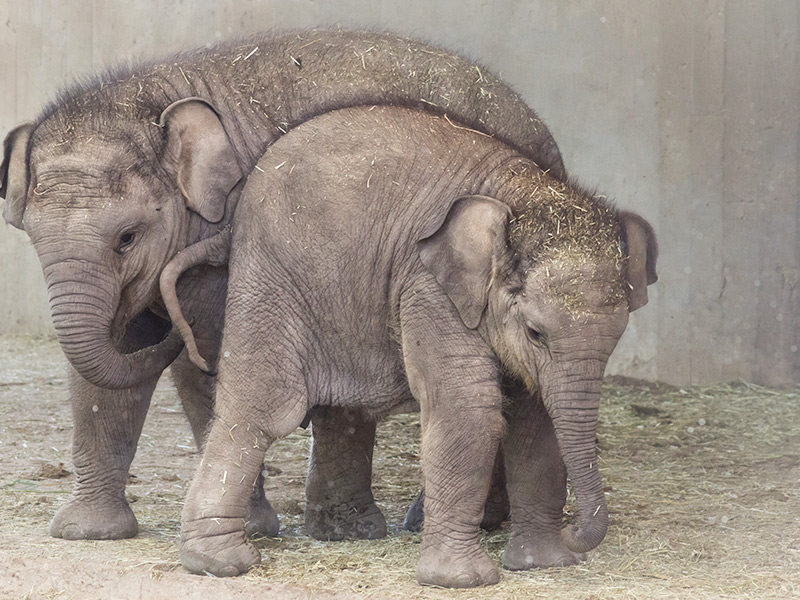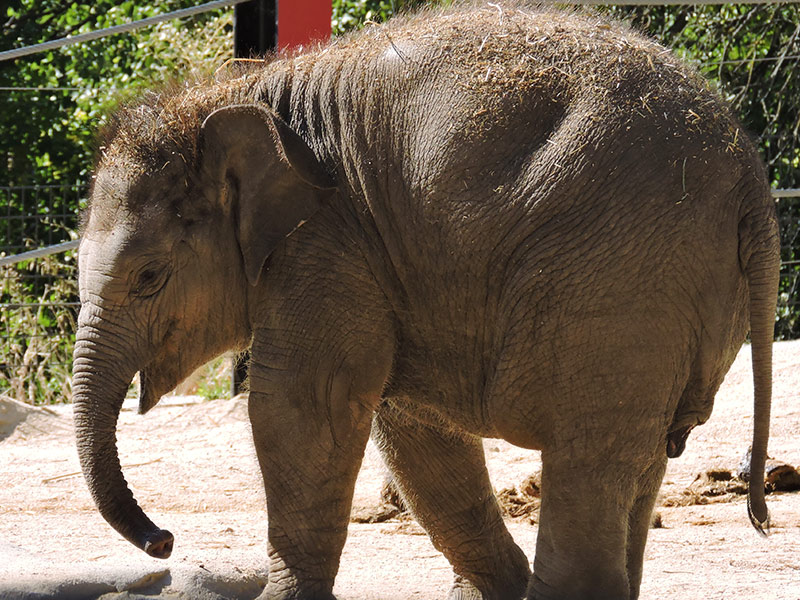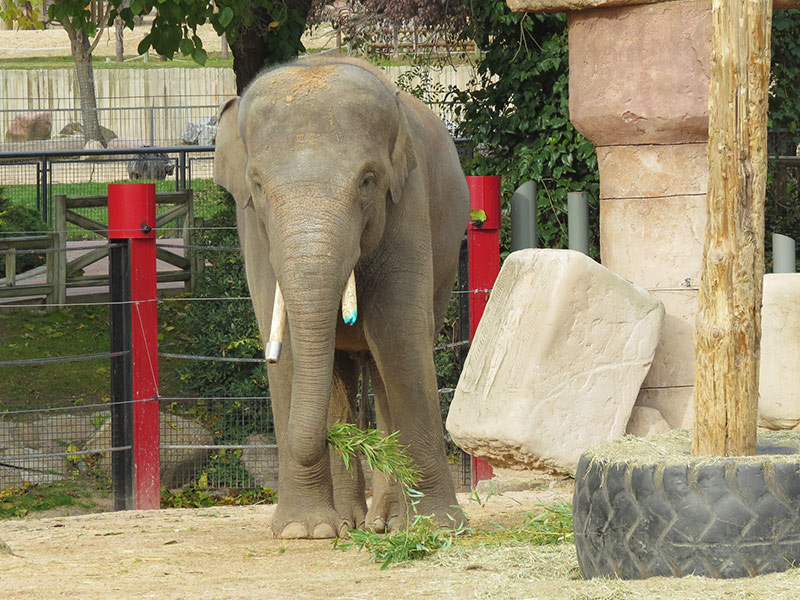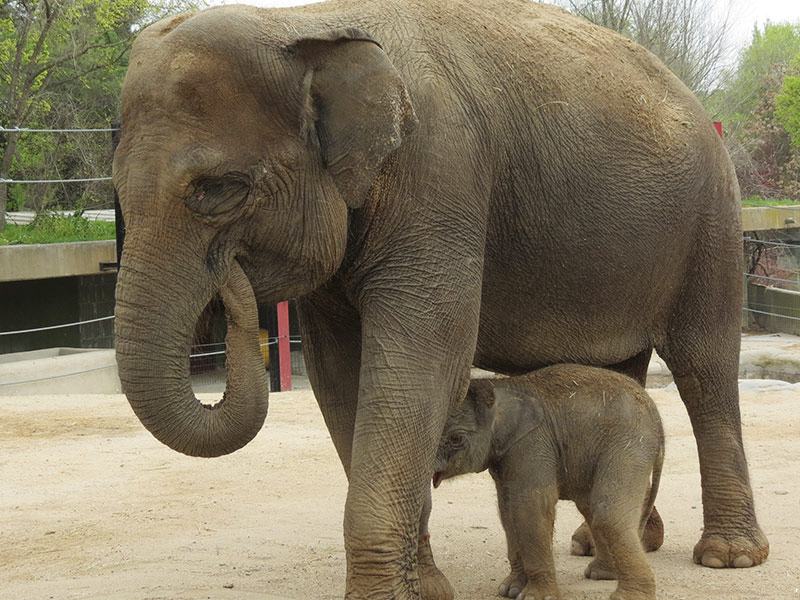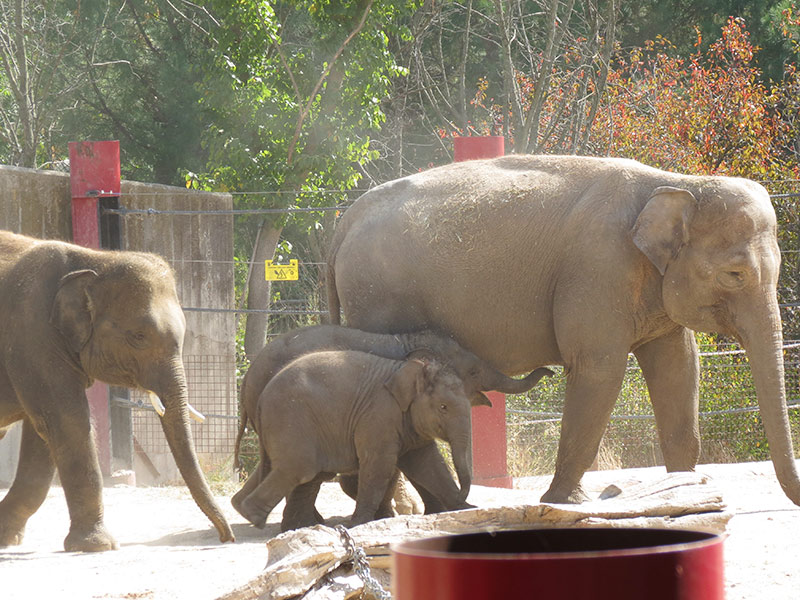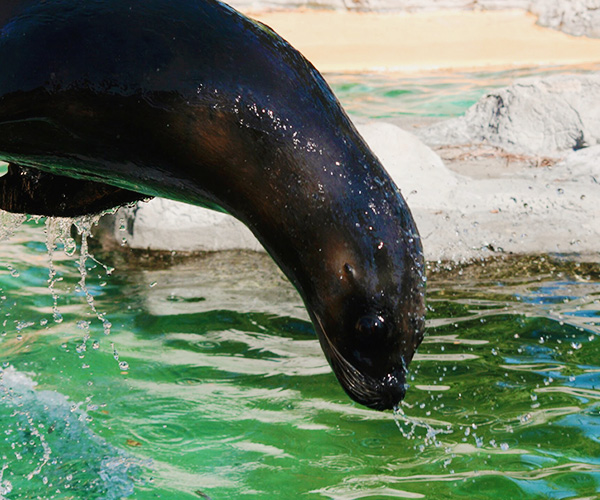Our subspecies of elephant together with those of Borneo, India and Sri Lanka form the group of Asian elephants, which vary morphologically with respect to their African relative, somewhat larger. Their forehead is more domed, their ears are rounder and smaller, their back is more arched and their trunk ends in a single lobe instead of two. At birth, the large layer of black hair that covers this giant mammal is striking, which will gradually be lost until its thick, gray skin is revealed, the same one that effectively protects it from insect bites and the inclemency of its habitat. The elephants pour mud over themselves to exfoliate and protect their skin.
They feed on leaves and fruits, and live in herds of related females and their young, led by a matriarch. Males leave the group when they reach sexual maturity. They only return to the females when they perceive, via infrasound, that one of them wishes to reproduce. There is then a competition between males, from which a winner will emerge, who will mate with the female.
Gestation lasts 22 months, after which a single calf is born, weighing around 91 kilos and measuring one meter in height. During its first six months of life, it feeds exclusively on mother's milk, which is later supplemented by plants. The lactation period can last for five years. It is estimated that in its first month it can reach 200 kilos; and in adulthood, about five tons.
